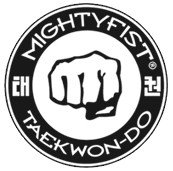President’s Message May
Protocol: Its Importance & Its Limitations
• a sport,
• a martial art,
• a way of life, and
• a tool for social development
In previous messages I have
frequently emphasized the
importance of developing all four
facets of ITF Taekwon-Do.
• courtesy,
• integrity,
• self-control,
• perseverance,
• indomitable spirit.
The five tenets are the framework on which we have structured the Level 1 course about the Do.
This course “What is the Do and Its Benefits” will be offered to ITF members starting in 2010.
Protocol is an important aspect of the first tenet: Courtesy.
Courtesy – Etiquette – Protocol
What is the difference?
Among the elements of Courtesy described by our Founder General Choi Hong Hi in the Encyclopedia of Taekwon-Do are the following:
- to be polite to one another,
- to distinguish instructors from students, seniors from juniors, elder from younger,
- to behave oneself according to etiquette.
These three elements are all about proper etiquette and protocol, and General Choi made it very clear that both are very important in Taekwon-Do.
Etiquette defines how one should act to show respect for others and for the rituals and traditions of an organization or culture.
A high degree of etiquette should be observed by students, both inside and outside the training hall (do jang). This should be applied by lower ranking students to senior students while training, by higher ranking students to elder students outside of the do jang, and by all students when visiting another do jang. In all cases, emphasis should be placed on correct and proper salutation. It is a form of respect and courtesy in Western as well as Oriental societies.
The Encyclopedia of Taekwon-Do (vol. 1, p. 66)
Protocol refers to formal rules that establish what is proper and correct in official intercourse. Every type of social structure has its rules of protocol “governments of all kinds, the military, religions, international diplomacy, business, sports, etc. ” whether their rules of protocol are written in an official document or simply part of their oral tradition.
The following examples were chosen to illustrate that no matter where you live or which organization you belong to, you will always be required to conform to protocol:
When we think about it, we realize that even families have rules of protocol. Of course it would be unusual to have written rules of protocol for your family, so we should probably call them “expectations” rather than rules. Are the members of your family expected to attend family gatherings, to serve elaborate meals or to offer nice presents on special occasions? Each family has its own rules based on their culture, religion, social status, and family traditions. Those rules are in reality an informal code of protocol.
At the other extreme, in the world of international diplomacy everyone must follow complex rules of protocol, particularly on ceremonial occasions. When watching two heads of state meet on the television news, have you ever wondered if they are really happy to see each other? They are being polite, but are the smiles and friendly handshakes genuine or are they “just going through the motions”?
In Taekwon-Do, protocol starts with being polite, but that is just the beginning. We have to take it farther, always applying the rules of protocol in a spirit of respect, according to the martial arts tradition. There should never be any doubt that our gestures of protocol are genuine!.
Whatever the circumstances, following the appropriate protocol is considered to be civilized behavior. It is one way we show respect for authority.
The Origins of Protocol
Protocol for the martial arts started many centuries ago in the Orient, originating as practical gestures designed to cultivate good relations with others. Over time, those practical gestures evolved into formal rules of protocol.
Confucian thought was a major influence on the development of the Taekwon-Do philosophy. General Choi taught his students that by working on self-improvement they were helping to create a better world. As you know, that belief is expressed in the Student Oath.
Courtesy (Ye Ui) is the first of the five tenets of Taekwon-Do defined by General Choi. It is also one of The Five Virtues identified by Confucius. Li refers to good manners, politeness, correct behavior, rituals, and ceremony; in short, Li is about protocol. The other Virtues are Ren(benevolence, Xin (integrity), Yi (righteousness), and Zhi (knowledge).
It is interesting to note that Confucius believed that traditional music and dance were in perfect harmony with the world and heaven. He taught his students that by understanding and properly performing traditional music and dance they could achieve harmony with the universe.

If you have seen illustrations of Chinese mandarins in ancient times, you have probably noticed that they wore tunics with very long, very wide sleeves. When a mandarin pulled up his sleeve it was a practical gesture – it was difficult to use his hands if he didn’t – but it was also a way of signaling that he was being open and honest. Perhaps this is where the expression “to have nothing up your sleeve”, meaning that you have nothing to hide, comes from?
Nowadays, when you support your right forearm with your left hand to shake hands the Taekwon-Do way, you are following protocol and, although you may not always be conscious of it, you are also telling the other person that he can trust you. Using one hand to support the other arm is a sign of total respect.
It is a well-known Western custom for people to clink their glasses together when someone proposes a toast. There are several theories about the origin of this custom, but it seems likely it started as a practical gesture. It is believed that in order to prove that the drink was not poisoned, the host would pour a small amount of the guest’s drink into his own cup and drink it. Some believe this custom originated in Europe in the Middle Ages, while others say it started even earlier with the ancient Greeks.
However it originated, the practice of making toasts and clinking glasses has survived as a custom in many cultures. Our Taekwon-Do protocol regarding toasts requires that the glass be held in the right hand, with the left hand supporting the right arm. To show proper respect for his seniors, a junior will be careful not to raise his glass higher than the glasses of his seniors.
No matter the origins of the rules of protocol, when we follow the appropriate rules we are showing respect for others and for traditions.


Why is Protocol Important?
Protocol exists because all societies need rules. We use rules to create structure and order because without rules there would be anarchy. In a democratic society, the government makes laws and rules that dictate what a citizen must or must not do, but those laws also protect the citizens. The freedom of the individual is always tempered by respect for the freedom of others in a democratic society.
Protocol is an integral part of the martial arts, and respecting our ITF protocol has a positive influence on everyone involved. In fact, we cannot benefit fully from Taekwon-Do unless we respect the protocol.
Many years ago when I moved from Vietnam to Canada to attend university, I continued teaching Taekwon-Do by starting a club at Laval University, but I was disappointed to discover that there were no other Taekwon-Do teachers in the Quebec City area. There were a number of schools offering instruction in other styles of martial arts, but when I took my students to participate in the open tournaments where many martial arts were represented, I noticed one big difference between them and ITF Taekwon-Do: In the ITF we learn the philosophy of the martial arts and follow protocol, while the other schools were teaching only techniques. So they were actually teaching combat sports, not true martial arts.
Over the years I have continued to study the Taekwon-Do philosophy and the ancient Oriental philosophies it is based on. I teach the Do and the Taekwon-Do protocol to my students, because I want to help them to become true martial artists.
The Benefits of Protocol
It is indeed poor taste for a black belt to slight a beginning white belt who might very well be the instructor’s senior in both age and station. Students visiting other do jangs, whether they be Taekwon-Do or other martial arts, must pay proper respect and observe the traits of modesty and courtesy at all times.
The Encyclopedia of Taekwon-Do (vol. 1, p. 66)
In my professional career, I have responsibility for international development for my company. I have participated in numerous business missions to countries in the Orient and elsewhere. To prepare for these missions, I have taken courses designed to help business people understand other cultures.
By learning and applying the rules of protocol of the country you are visiting, you can show that you respect their culture and traditions. You can avoid behavior that would be insulting to your hosts (not to mention embarrassing for you). I have always considered the information provided in these courses as essential to the success of our missions.
In Taekwon-Do, like in business and other aspects of life, by conforming to the rules of protocol appropriate to the circumstances, you can:
- show respect for people and organizations,
- create a good environment for learning,
- show that you are serious about your Taekwon-Do training,
- recognize that you need to remain modest and humble.
Let’s look at each of these points more closely:
- You can show respect for people and organizations
By acting according to the ITF Taekwon-Do protocol, you show respect for our martial art, for the ITF, and for your fellow practitioners. There are also benefits from conforming to protocol in other aspects of your life, such as in education, business, and sports.



One of the rules I learned in the courses for business people is that in Asia you must always present your business card with a bow, offering it with both hands. Also, when receiving a business card from someone else, you must bow, accept the card with two hands, and take the time to read the card before carefully putting in a safe place. From their reactions, it was clear that our Asian hosts noticed that we had made the effort to conform with their custom and that they appreciated it very much.
During one mission to Japan a Western businessmen in our group remembered to remove his shoes before entering the home of a Japanese businessman he was hoping to do business with. But when our host served sushi, the Western businessman pushed it away with a disgusted look on his face, muttering something about “raw fish”.
While he had learned the importance of complying with certain local customs – he had remembered to remove his shoes before entering — his actions demonstrated that he had not fully understood the principle of respect for others that motivates us to comply with such customs.
As you can imagine, the westerner’s inappropriate reaction to the sushi destroyed the initial good impression made by removing his shoes. Our Japanese hosts remained polite, but the businessman lost the contract.
I am not saying that the Western businessman should have forced himself to eat the sushi. He could have refused, but he should have done so politely. The problem was his attitude, not the sushi. This example helps us to see that being a true martial artist means not following protocol only when in a martial arts environment. Being a true martial artist means being guided in everything we do by the principles that are the foundation of our protocol.
- You can create a good environment for learning
Teachers know that students always learn better when they are in a comfortable environment with few distractions, but they also need to be in the right frame of mind to learn. Going to the dojang, wearing the dobok, and making the appropriate gestures of protocol all help us to achieve this.A number of years ago I was coaching a team and our training sessions took place very early in the morning. People arrived for training looking like they had just got out of bed, not quite awake yet. Also, I noticed that they were being careless about their appearance and neglecting to greet each other and me properly. That changed after I talked to them about the importance of adhering to the rules of protocol. There was a noticeable improvement in the atmosphere, and everyone benefited more from our training sessions. - You can show that you are serious about your Taekwon-Do training
The following experience shows how we can do this:In the 1980s I was the coach of the Canadian Taekwon-Do team preparing to compete in the ITF World Championship in Athens (Greece). A psychologist who specialized in helping athletes with mental preparation was assigned to work with my team. (I should point out that although it is now considered normal, at that time mental preparation for athletes was a new concept.) To make the best use of his time and reduce costs, it was decided that the psychologist would also work the local synchronized swimming team.After working with the two teams for a period of time, the psychologist noted that the members of both teams worked very hard and really wanted to win.
He was impressed that ITF Taekwon-Do offered both physical and mental training, but what really impressed him was the discipline of the Taekwon-Do people and their respectful attitude. He could tell that our team members did not perform the protocol gestures (bowing, etc.) mechanically. They really understood that by making those gestures they were signaling a readiness to train, preparing mentally, and proving that they took their training seriously. The protocol helped them to concentrate on their training.

The psychologist called this “une boucle fermée de formation” in French, which could be translated literally as “a closed loop for learning”. I had never thought about it before, but I understood then that at the dojang our students are enclosed in a sort of “training bubble”, an environment where we provide the conditions they need to progress and be successful. The Taekwon-Do protocol is an essential element of that environment.
- You can recognize that you need to remain modest and humble
Whatever level of Taekwon-Do training we reach, we need to remember that there is always more to learn. Following the rules of protocol in a spirit of respect serves as a reminder that we are all students. It will help us to remain humble and modest (not boastful).
Apply Protocol in a Spirit of Respect
- I would like to start this section with a couple of examples:About thirty years ago, primary and high school teachers where I live in Quebec (Canada) wanted to have a friendlier relationship with their students, so they insisted on being called by their first (given) names rather than Mr, Mrs. or Miss. Recently there has been a trend back to using these titles.What happened? The teachers eventually realized that the problem was that a measure of respect had been lost. When students called their teacher by his or her first name, they felt it put them on the same level as their teachers, so the students felt free to criticize their teachers and to challenge their decisions.Just recently I read that some university professors in Vietnam have asked their students to call them by their first names. In this case, the goal is not to become “best friends” with their students but to encourage them to feel comfortable expressing themselves in class. Apparently the students were so used to the traditional way of teaching “the professor talks and the students listen” that they were afraid to express an opinion. As a result, the professors found it difficult to evaluate how much the students really understood.
- What can we learn from these stories?Like the teachers in Quebec and the university professors in Vietnam mentioned above, our teachers need to find the right balance. I mean the right balance:
- between the teacher’s authority and the mutual respect between teacher and student;
- between the desire to perform well and the requirements of our protocol,
- between the technical aspects of Taekwon-Do and the mental aspects,
- between the traditions of the martial arts and life in the twenty-first century,
- between East and West;
and I am sure you could add other aspects to this list.
One more example:
At the end of April I attended the ITF European Championships in Benidorm (Spain). I was pleased to see that all the competitors were following the rules of protocol during the competitions. However, I also noticed that the members of some teams were not showing proper respect for their seniors during those times when they were not actually participating inside the rings. It was quite obvious to me that some teams had not been taught to apply the rules of protocol with respect and understanding; they were complying simply because it was required for the competition. But following protocol is not optional in Taekwon-Do, and the requirement for a junior to bow to his senior does not apply only during competitions.
I would like to take this opportunity to encourage all our coaches to make sure that their competitors are aware of the meaning of the protocol gestures and of the importance of performing them in a spirit of respect.
The Scope of Application of Protocol
In the martial arts tradition, protocol is very important. In fact, protocol is fundamental to practicing the martial arts. Having a formal Code of Protocol for the ITF will ensure that the same rules are followed everywhere, and this standardization will make the ITF a more cohesive organization.
As I pointed out above, the ITF rules of protocol are based on the martial arts principle of respect. This means that the scope of application of the protocol is much broader than just the specific actions described in the Code of Protocol. If a specific situation is not specifically mentioned in the Code, we should ask ourselves how the principle of respect relates to that situation and act accordingly.
For example, one principle of our protocol is that the most senior must be recognized first and the others in descending order of rank. I am sure you do this quite naturally in the dojang. However, what should you do when attending a social event with other Taekwon-Do people? You should act according to the principle. You should seek out and greet the most senior first.
A second example: Included in the ITF Code of Protocol will be a definition of the appropriate apparel for training and competition. By dressing appropriately you will be showing respect for the ITF, for your teachers, for your fellow students, and for your opponents in competitions. In addition, by dressing appropriately and good grooming, you will be expanding the principle of respect into your life outside Taekwon-Do and showing respect for everyone you meet.
In a job interview, inappropriate clothing or poor grooming could prevent you from being given the opportunity to showcase your abilities and skills.
Why wouldn’t you dress appropriately on such an occasion?
I realize that what you wear and how you eat may seem like insignificant details, but all those details added together become important. You appearance is a major factor in making a good first impression, and if you don’t make a good first impression, you may not get a second chance.
Another benefit of dressing appropriately is that it helps us to feel more comfortable on social occasions.
Have you even wondered what to wear to a social event when seniors are present? Perhaps you have been invited to the home of a senior. How can you decide what to wear? The principle is that juniors follow the lead of their seniors, so take your cue from them. If you need help, simply ask what would be appropriate for the occasion. As a general rule, it is always better to be slightly overdressed for the occasion than to be dressed more casually than everyone else.
The scope of application of our protocol also extends to the importance of good manners when eating with others. Although it is not likely that instructions about good manners at the table will be included in the Code of Protocol, we should always find out what is considered acceptable behavior in the circumstances and act accordingly. This is one more way of showing respect for others. Complying with the rules of protocol helps us to progress in Taekwon-Do and also has positive benefits in the other aspects of our lives.
A Code of Ethics or a Code of Protocol?
A Code of Ethics
is a moral guide.
It differentiates between
right and wrong.
A Code of Protocol establishes formal rules
that define what is proper and
correct in the organization.
It describes how you should act.
Why does the ITF need a Code of Ethics and a Code of Protocol?
While ethics and protocol are inter-related, it is important to understand the differences:
You would not steal money from your teacher, because that would be morally wrong and a violation of the Code of Ethics. (It would also be illegal.). However, since it is unlikely that the Code of Protocol would include a rule specifically forbidding stealing, you would probably not be violating the written rules of protocol. Nevertheless, you would be violating the principle of respect for others that is the foundation for the Code of Protocol.
ITF students show respect for their teachers by bowing as required by the Taekwon-Do protocol. Not bowing to your teacher would be a clear demonstration of immaturity and poor attitude, as well as a lack of respect for your teacher. I am sure that is not what you want.
But what would you do in the unlikely event that a senior tells you to do something that you believe is not ethical? A basic principle of protocol is that a junior must always show respect for his senior. However, the rules of protocol do not require blind obedience. A student may express an opinion or refuse to do something that goes against his conscience, but there is never a good reason to violate the rules of protocol by being disrespectful to your senior. It is very important that you not make the situation worse by losing your temper or by complaining to others. If you found yourself in such a situation, you could ask to speak to the senior in private, and then calmly and politely explain your concerns.
The ITF does not condone the abuse of authority in the organization. We have an Ethics & Discipline Committee and a policy that outlines the steps that can be taken to resolve such a situation. So, if the situation cannot be resolved by talking to your senior, you could ask for help from a higher level.
From these examples, you can see why the ITF needs both a Code of Ethics and a Code of Protocol, and I am pleased to say that we are making good progress in both these projects.
A Code of Ethics for ITF Teachers
Master Evan Davidson of ITF New Zealand, who chairs the ITF Ethics & Discipline Committee, had proposed a draft Code of Ethics for ITF teachers, and I am pleased to announce that it was adopted by the ITF Board of Directors at their meeting held in Benidorm (Spain) at the end of April. You will be hearing more about the implementation of this Code of Ethics in the near future.
A Code of Protocol for the ITF
The leadership team of the ITF has always recognized the value of having a Code of Protocol for the organization.
In fact, a few years ago we had mandated an internationally-known protocol expert to produce a protocol manual for the ITF. He attended the 2005 ITF World Championships in Germany to see for himself how protocol was applied at our competitions. He told me that even when the competitors’ movements were violent he could see that they respected each other, their coaches, and the umpires. Unfortunately, he later experienced serious health problems, and the project was put on hold.
As part of the preparations for the 2007 World Championships in Quebec City (Canada), the Organizing Committee in collaboration with Mr Kurt Ottesen, a member of the ITF Tournament & Umpire Committee, produced a simplified Guide to protocol specifically for that competition. A copy of this booklet was given to each of the coaches participating in the World Championships. We received very positive feedback and many requests for additional copies of the booklet.
If you would like to download a copy of this Protocol booklet, click here (PDF, 340 kB).
More recently, Master Pierre Laquerre, one of my students who was recently promoted to Black Belt 8th degree, produced a draft document outlining the rules of protocol. This document will be used to ensure that all the clubs in the province of Quebec follow the same protocol.
I intend to invite a number of our high-ranking masters to form a working group that will produce an official Code of Protocol for the ITF, using the simplified protocol guide from the 2007 World Championships and the document produced by Master Laquerre as a starting point.
Obviously, the collaboration of two of the ITF’s Standing Committees is essential to the success of this project: the Tournament & Umpire Committee, chaired by Master Alberto Katz, and the Techniques & Instruction Committee, chaired by Grand Master Hector Marano.
To ensure that the proposed rules are accepted by the majority of our high-ranking Grandmasters & Masters, we will also be conducting extensive consultations on this subject.
When this process is completed, the first section of the proposed code will be presented to the ITF Board of Directors for approval at their meeting in the next World Championship in Argentina in the coming November. The first section of the ITF Code of Protocol will deal with the types of situations we encounter most frequently in Taekwon-Do. Our goal is to have this first section ready for 2010. That is when the Level 1 course about the Do will become available to ITF members who have reached red belt status or higher, and that course includes a segment about protocol that will be based on this code.
Conclusion
Protocol is not optional; it is an essential element of Taekwon-Do. You cannot comply with protocol only when you feel like it. It must become an integral part of your life in Taekwon-Do.
I am very pleased that the ITF will soon have a written Code of Protocol and that the rules of protocol will be the same for all practitioners of ITF Taekwon-Do around the world. Once the Code is published, the rules of protocol will be followed for all official ITF events. Our ITF teachers and Masters will teach the rules of protocol to their students and make sure they are followed.
It is often said that respect must be earned. To earn the respect of his or her students, an ITF teacher must:
- offer high quality instruction;
- understand and teach the Do;
- ensure students understand the importance of the rules of protocol and set a good example by following the rules.
Our ITF teachers need to create a welcoming environment that encourages learning and understanding, while at the same time making sure that their students comply with the rules of protocol.
In conclusion, I would ask you to remember that although Protocol is extremely important, it is only one element of Courtesy, and Courtesy is just the first of the five tenets of the Taekwon-Do credo.
To become true martial artists and live the Taekwon-Do way of life, we must study, understand, and put into practice all the elements of the five tenets:
Courtesy, Integrity, Self-control, Perseverance, and Indomitable Spirit
Then we will be able to contribute to the development of a better society promoting peace, justice, and freedom.
Best wishes to everyone,
Grand Master Trân Triêu Quân
President of the ITF
Quebec City, May 14th, 2009
Your goal is to have a happy and satisfying life
and the ITF is here to help you achieve that goal.


 XVI World Senior Championships TKD ITF Results – 2009
XVI World Senior Championships TKD ITF Results – 2009













